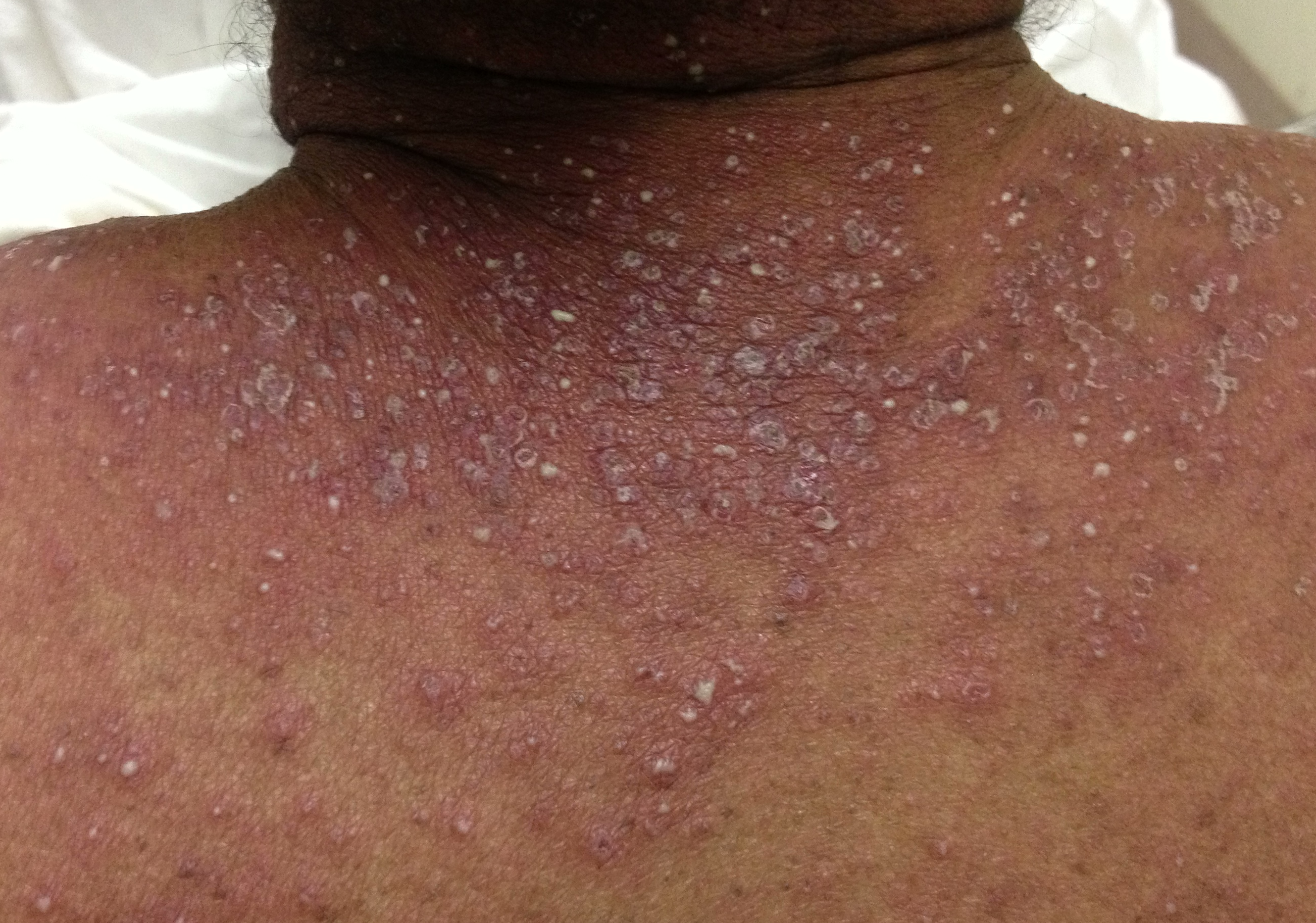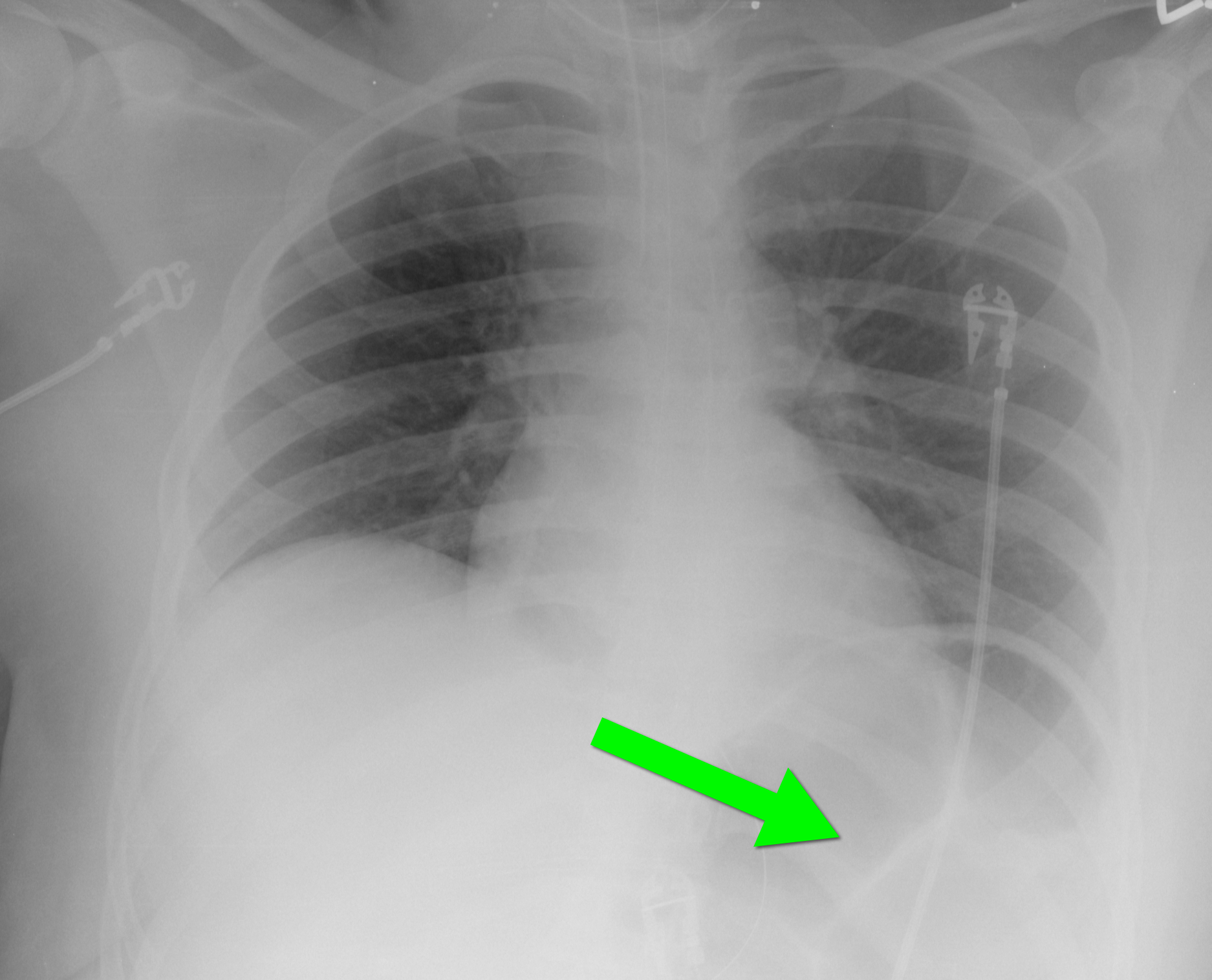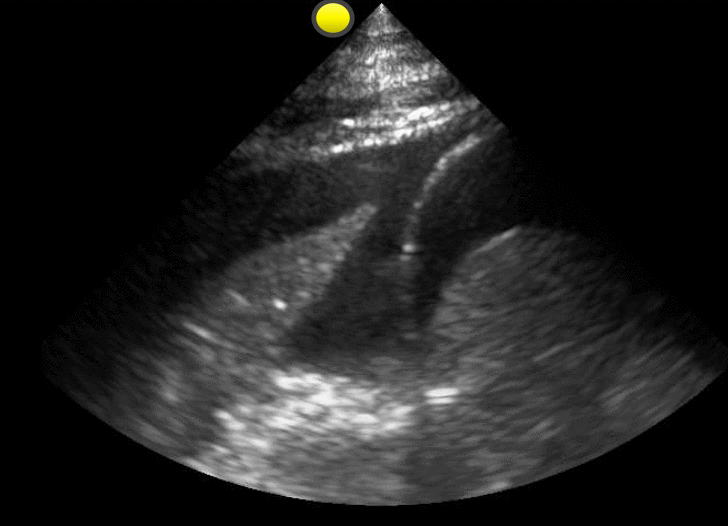Category: Cardiology
Keywords: LVH (PubMed Search)
Posted: 3/25/2013 by Semhar Tewelde, MD
Click here to contact Semhar Tewelde, MD
Okin PM, Roman MJ, Devereux RB, Kligfield P. Electrocardiographic identification of increased left ventricular mass by simple voltage-duration products. J Am Coll Cardiol. 1995 Feb; 25(2):417-23.
Category: Pediatrics
Posted: 3/23/2013 by Mimi Lu, MD
Click here to contact Mimi Lu, MD
In children, it is important to consider the maximum doses of local anesthetics when performing a laceration repair or painful procedure like abscess drainage. If there are multiple lacerations, or large lacerations, it may be possible to exceed those doses if one is not careful.
Max doses of common anesthetics
For example, in a 20 kg child (an average 5-6 year old), the maximum doses would be:
Pearls:
Category: Toxicology
Keywords: dexmedetomidine, cocaine (PubMed Search)
Posted: 3/21/2013 by Fermin Barrueto
(Updated: 12/15/2025)
Click here to contact Fermin Barrueto
Cocaine toxicity is characterized by the sympathomimetic toxidrome: tachycardia, hypertension, hyperpyrexia, diaphoresis as well as sodium channel blocking effects that can cause local anesthesia topically, QRS widening and even seizure.
Usual treatment for a cocaine toxic patient is benzodiazepines and cooling. Be wary of end organ damage, trauma and seizures.
There was a recent study that looked at dexmedetomidine to treat the sympathomimetic effects. Placebo-controlled trial used cocaine-addicted volunteer and applied intranasal cocaine. Measuring skin sympathetic nerve activity and skin vascular resistance, this study, unfortunately, showed as the dose increased MAP did not fall further and increased paradoxically in 4 of 12 subjects.
This highlights the incredible physiologic mechanism of catecholamine release from the CNS with cocaine. This mechanism overlaps some with the centrally acting alpha agonist - dexmedetomidine and was shown in the study by Kontak et al.
Kontak AC, Victor RG, Vongpatanasin W.
Hypertension. 2013 Feb;61(2):388-94
Category: International EM
Keywords: novel, coronavirus, International, infectious, SARS, pulmonary (PubMed Search)
Posted: 3/19/2013 by Andrea Tenner, MD
(Updated: 3/25/2013)
Click here to contact Andrea Tenner, MD
General Information:
14 cases of lower respiratory infection caused by a new coronavirus (not the original SARS virus, but with a similar picture) occurred in the past year. Mortality rate of this virus is >50%.
Area of the world affected:
Relevance to the US physician:
Bottom Line:
Consider this infection in patients with a lower respiratory tract infection who have traveled to or had contact with someone who traveled to the above regions in the past 10 days.
ASK ABOUT RECENT TRAVELS IN PATIENTS PRESENTING WITH SYMPTOMS OF SEVERE LOWER RESPIRATORY TRACT INFECTION!
University of Maryland Section of Global Emergency Health
Author: Veronica Pei MD, MPH
cdc.gov/mmwr/preview/mmwrhtml/mm6210a4.htm?s_cid=mm6210a4_w
Category: Critical Care
Posted: 3/19/2013 by Mike Winters, MBA, MD
(Updated: 12/15/2025)
Click here to contact Mike Winters, MBA, MD
Extubating in the ED
McConville JF, Kress JP. Weaning patients from the ventilator. NEJM 2012; 367:2233-9.
Category: Visual Diagnosis
Posted: 3/18/2013 by Haney Mallemat, MD
Click here to contact Haney Mallemat, MD
A 56-year-old woman with a history of psoriasis presents with fever, nausea, and painful pin-point pustules on an erythematous base. Her dermatologist recently reduced her prednisone dose. What's the diagnosis?

Answer: Pustular psoriasis
Pustular psoriasis
Occurs in patients with psoriasis, classically occurring after a decrease in dose or cessation of systemic steroids
Symptoms include:
These lesions can eventually drain and desquamate, leaving large patches of exposed dermis.
Complications include:
Patients may be admitted for supportive care and treatment with disease-modifying antirheumatic drugs (DMARDs) such as cyclophosphamide or methotrexate.
REFERENCE
L Naldi, D Gambini, The clinical spectrum of psoriasis, Clinics in Dermatology, Volume 25, Issue 6, November–December 2007, Pages 510-518
Follow me on Twitter (@criticalcarenow) or Google+ (+criticalcarenow)
Category: Cardiology
Posted: 3/17/2013 by Semhar Tewelde, MD
Click here to contact Semhar Tewelde, MD
Zanuttini D, Armellini I, et al. Impact of Emergency Coronary Angiography on In-Hospital Outcome of Unconscious Survivors After Out-of-Hospital Cardiac Arrest Original. J Am Coll Cardiol 2012; 110:12 pages 1723-1728
Category: Orthopedics
Keywords: scapular, fracture (PubMed Search)
Posted: 3/16/2013 by Michael Bond, MD
(Updated: 12/15/2025)
Click here to contact Michael Bond, MD
Scapular fractures
Carol Rivers Written Board Review Book 7th edition, Ohio Acep
Category: Toxicology
Keywords: gastric lavage, GI decontamination (PubMed Search)
Posted: 3/9/2013 by Bryan Hayes, PharmD
(Updated: 3/14/2013)
Click here to contact Bryan Hayes, PharmD
In 2013, the American Academy of Clinical Toxicology and European Association of Poisons Centres and Clinical Toxicologists published a second update to their position statement on gastric lavage for GI decontamination (original 1997, 1st update 2004).
Bottom line: Gastric lavage generally causes more harm than good. It should not be thought of as a viable GI decontamination method.
Bonus: Dr. Leon Gussow (@poisonreview) reviews the position paper on his blog, The Poison Review, here: http://www.thepoisonreview.com/2013/02/23/gastric-lavage-fuggedaboutit/
Benson BE, et al. Position paper update: gastric lavage for gastrointestinal decontamination. Clin Toxicol 2013 Feb 18. [Epub ahead of print]
Follow me on Twitter (@PharmERToxGuy)
Category: International EM
Posted: 3/13/2013 by Walid Hammad, MD, MBChB
Click here to contact Walid Hammad, MD, MBChB
Case Presentation: A 31 yo Hispanic male presents to your emergency department with extensive facial abrasions and contusions from an assault 7-8 days ago, c/o difficulty swallowing for 1-2 days. He was seen at that time in a nearby emergency department for his abrasions and contusions.
Upon examination, you find him to be irritable and restless, diaphoretic, tachycardic, and with mild neck stiffness. Over the course of his stay in the ED, he develops generalized muscle rigidity, severe neck stiffness and opisthotonic posturing.
Clinical Question: What is the diagnosis? And what went wrong?
Answer: This is an early presentation of generalized tetanus.
Unfortunately, little evidence exists to support any particular therapeutic intervention in tetanus. There are only nine randomized trials reported in the literature over the past 30 years. The goals of treatment include:
. At risk populations:
o Elderly patients are substantially less likely than young individuals to have adequate immunity against tetanus.
o Immigrants from Mexico had a 67% non-protective anti-tetanus antibody (ATA) level.
o In a pilot study 86% of Korean immigrants did not have protective ATA levels
o Emergency physicians were less likely to adhere to the tetanus guidelines when admitting patients to the hospital.
· Halting the toxin production: wound management and antimicrobial therapy
o Metronidazole 500mg IV q 6-8 hrs or Penicillin-G 2-4M units IV q4-6 hrs for 7-10 days
· Neutralization of the unbound toxin
o Human Tetanus Immunoglobulin (HTIG): A dose of 3000 to 6000 units intramuscularly should be given ASAP
o Since tetanus is one of the few bacterial diseases that does NOT confer immunity following recovery from acute illness, all patients with tetanus should receive FULL active immunization immediately upon diagnosis
· Treatment of generalized tetanus: this is best performed in the ICU and includes:
o Early and aggressive airway management
o Control of muscle spasms
o Management of dysautonomia
o General supportive management
Bottom Line:
o EP’s consistently under-immunize for tetanus, especially in elderly and immigrant populations, who have a much higher risk of under-immunization.
o Better awareness of tetanus prophylaxis recommendations is necessary, and future tetanus prophylaxis recommendations may be more effective if they are also based on demographic risk factors.
o Emergency physicians must comply with immunization guidelines for injured patients to assure adequate protection from both tetanus and diphtheria.
University of Maryland Section of Global Emergency Health
Author: Terry Mulligan DO, MPH
Alagappan K, Rennie W, Kwiatkowski T, Falck J, Silverstone F, and Silverman R. Seroprevalence of tetanus antibody titers in adults over 65 years of age. Annals of Emergency Medicine. 1996; 28:18-21.
Alagappan K, Rennie W, Kwiatkowski T, and Narang V. Antibody protection to diphtheria in the elderly. Annals of Emergency Medicine. 1997; 30:455-58.
Alagappan K, Rennie W, Narang V and Auerbach C. Immunologic response to tetanus toxoid in the elderly. Annals of Emergency Medicine. 1997; 30:459-462.
Alagappan K, Rennie W, Lin D, Auerbach C. Immunologic response to tetanus toxoid in the elderly:one year follow-up. Annals of Emergency Medicine. 1998; 32:155-60.
Talan D, Abrahamian F, Moran G, Mower W, Alagappan K, Tiffany B, Pollack C, Steele M, Dunbar L, Bajani M, Weyant R, Ostroff S. Tetanus immunity and physician compliance with tetanus prophlyaxis practices among emergency department patients presenting with wounds. Annals of Emergency Medicine. 2004, 43: 305-314
Alagappan K, Pulido G, Caldwell J, Abrahamian FM. Tetanus immunoprophylaxis in the emergency department: physician compliance in admitted versus discharged patients. Southern Medical Journal. Volume 99, No 3, 2006
Alagappan K, McGowan J, DeClaro D, Ng D, Silverman RA, Tetanus antibody protection among HIV-infected US-born patients and immigrants. International Journal of Emergency Medicine, Vol 2 : 123-126, June 2008
Alagappan K, Park R, Kuo T, Naderi S, Silverman R. Seroprevalence of tetanus antibody titers among Korean Americans in the New York City area -a pilot study, J Immigrant Minority Health. 11:105-107, 2009.
World Health Organization. Immunization surveillance, assessment and monitoring. Maternal and Neonatal Tetanus (MNT) elimination. http://www.who.int/immunization_monitoring/diseases/MNTE_initiative/en/index.html (Accessed on March 14, 2011).
Category: Critical Care
Posted: 3/12/2013 by Haney Mallemat, MD
Click here to contact Haney Mallemat, MD
Mechanically ventilated patients can develop a condition in which air becomes trapped within the alveoli at end-expiration; this is called auto-PEEP.
Auto-peep has several adverse effects:
Auto-PEEP classically occurs in intubated patients with asthma or emphysema, but it may also occur in the absence of such disease. The risk of auto-PEEP is increased in patients with:
Auto-PEEP may be treated by:
Patients may need to be heavily sedated to accomplish the above ventilator maneuvers.
Follow me on Twtitter (@criticalcarenow) or Google+ (+criticalcarenow)
Category: Visual Diagnosis
Posted: 3/11/2013 by Haney Mallemat, MD
Click here to contact Haney Mallemat, MD
40 year-old female requiring intubation for altered mental status. CXR is below with something under the left diaphragm. What’s the diagnosis?

Answer: Loop of colon.

Follow me on Twitter (@criticalcarenow) or Google+ (+criticalcarenow)
Category: Cardiology
Posted: 3/10/2013 by Semhar Tewelde, MD
Click here to contact Semhar Tewelde, MD
Boccara F, et al. HIV and Coronary Heart Disease. J Am Coll Cardiol 2013;61:511–23
Category: Orthopedics
Keywords: Concussion, closed head injury, return to play (PubMed Search)
Posted: 3/9/2013 by Brian Corwell, MD
Click here to contact Brian Corwell, MD
Key components in the determination of return to play following concussion include assessment of 1) brain function, 2) reaction time and 3) balance testing
Balance testing has become increasingly utilized in the diagnosis and management of sports related concussion. Studies have identified temporary or permanent deficits in static and/or dynamic balance in individuals with mild-to-moderate traumatic brain injury and sports related concussion. An example of this is the Balance Error Scoring System (BESS). Three stances are testing (narrow double-leg stance, single leg stance and a tandem stance) with the hands on the hips and eyes closed for 20 seconds. The FNL Sideline Concussion Assessment Tool utilizes a modified BESS. Example video below:
http://www.youtube.com/watch?v=xtJgv-D7IdU
Category: Pediatrics
Keywords: UTI, urinary tract infection (PubMed Search)
Posted: 3/8/2013 by Lauren Rice, MD
(Updated: 12/15/2025)
Click here to contact Lauren Rice, MD
--The diagnosis and treatment of pediatric urinary tract infections (UTIs) can be broken down into different age groups. The AAP has recently updated its recommendations for children age 2 - 24 months.
--In ill-appearing febrile infants age 2 – 24 months, who require early initiation of antibiotics, clinicians should obtain urinalysis and urine culture by catheterization or suprapubic aspiration prior to administration of the first dose of antibiotics.
--Key components of diagnosing a UTI include: urinalysis with the presence of pyuria (>10 WBCs per µL) and bacteriuria. The ultimate diagnosis relies on identification of >50,000 CFUs per mL of a single urinary pathogen in culture.
--Treatment of most UTIs in well appearing infants 2-24 months can be done with oral antibiotics for a course of 7-14 days. Common antibiotics used include: amoxicillin-clavulanate, trimethoprim-sulfamethoxazole, or cephalosporins (cefpodoxime, cefixime) based on local patterns of susceptibility.
--Febrile infants with UTIs should undergo renal and bladder ultrasound (RBUS) to evaluate the renal parenchyma and identify complications of UTI in children who are not responding to treatment within 48 hours.
--Voiding cystourethrography (VCUG) to diagnose vesicoureteral reflux (VUR) as a cause of UTI should not be obtained routinely, but only in children with abnormal RBUS or with recurrent febrile UTIs.
Urinary Tract Infection: Clinical Practice Guideline for the Diagnosis and Management of the Initial UTI in Febrile Infants and Children 2 to 24 Months. Subcommittee on Urinary Tract Infection, Steering Committee on Quality Improvement and Management. Pediatrics 2011; 595 – 610.
Category: Pharmacology & Therapeutics
Keywords: Statins, Acute Coronary Syndrome, Myocardial Infarction (PubMed Search)
Posted: 3/7/2013 by Ellen Lemkin, MD, PharmD
Click here to contact Ellen Lemkin, MD, PharmD
Statins for acute coronary syndrome. Cochrane Database of Systemic Reviews. Volume 9, 2011.
Category: International EM
Posted: 3/6/2013 by Walid Hammad, MD, MBChB
Click here to contact Walid Hammad, MD, MBChB
-A genetic autosomal recessive blood disorders that result from a defect in either the alpha (α) or Beta (β) globin chain in the hemoglobin molecule.
-Most common in people from a Mediterranean origin.
-Three types depending on the affected globin chain, α, β, or Delta (δ)
-Presents as hemolytic anemia with hepato-splenomegaly.
-Can present as mild anemia and may be misdiagnosed as iron deficiency anemia.
-Diagnosis is made through studies such as bone marrow examination, hemoglobin electrophoresis, and iron studies.
-The disease can cause hemochromatosis, which may be worsened by repeated blood transfusions.
-Hemochromatosis damages multiple organs including the Liver, spleen, endocrine glands and the heart causing cardiomyopathy and consequently heart failure.
-Severe thalassemia usually requires blood transfusion on regular basis (first measure effective in prolonging life)
-Treatment of trait cases is symptomatic with analgesics, anti-inflammatory (steroids or NSAIDs)
-The introduction of chelating agents capable of removing excessive iron from the body has dramatically increased life expectancy.
-Deferasirox (Exjade) was approved by the FDA in January 2013 for treatment of chronic iron overload caused by nontransfusion-dependent thalassemia.
Delvecchio M, Cavallo L. Growth and endocrine function in thalassemia major in childhood and adolescence. J Endocrinol Invest. Jan 2010;33(1):61-8
Cunningham MJ, Macklin EA, Neufeld EJ, et al. Complications of beta-thalassemia major in North America. Blood. Jul 1 2004;104(1):34-9
Fucharoen S, Ketvichit P, Pootrakul P, et al. Clinical manifestation of beta-thalassemia/hemoglobin E disease. J Pediatr Hematol Oncol. Nov-Dec 2000;22(6):552-7
Claude Owen Burdick. "Separating Thalassemia Trait and Iron Deficiency by Simple Inspection". American Society for Clinical Pathology. http://ajcp.ascpjournals.org/content/131/3/444.short
Category: Critical Care
Posted: 3/5/2013 by Mike Winters, MBA, MD
Click here to contact Mike Winters, MBA, MD
Ventilator-associated Pneumonia
Kollef MH. Ventilator-associated complications, including infection-related complications. Crit Care Clin 2013; 29:33-50.
Category: Visual Diagnosis
Posted: 3/4/2013 by Haney Mallemat, MD
Click here to contact Haney Mallemat, MD
65 year-old male with acute pulmonary edema. Ultrasound at the bedside shows this. What's the diagnosis?

Follow me on Twitter (@criticalcarenow) or Google+(+criticalcarenow)
Category: Cardiology
Posted: 3/3/2013 by Semhar Tewelde, MD
Click here to contact Semhar Tewelde, MD
